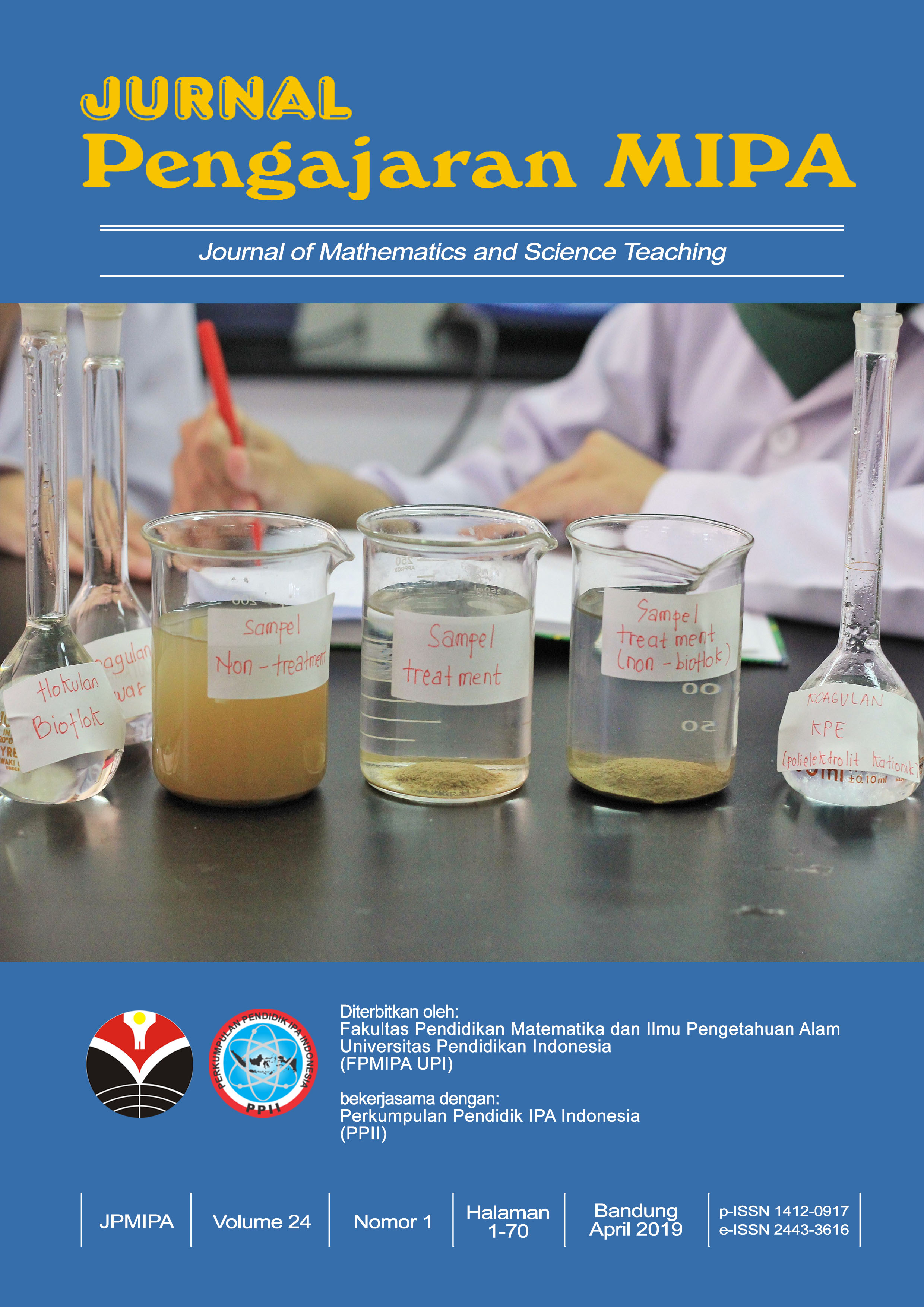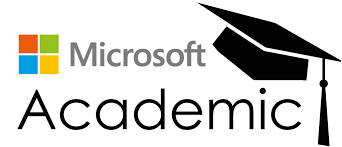ENHANCING STUDENTS’ PROBLEM-SOLVING SKILL BY DEVELOPING SOUND INTENSITY OF EXPERIMENT TOOL (SIET)
Abstract
EExperiments in physics learning are fundamental to facilitating students' needs to gain deeper conceptual understanding and practical skills. For schools in remote Indonesian regions, a practical and easily available tool for doing experiments in physics is necessary. A practical tool based on smartphone sensor for measuring sound intensity (Sound Intensity of Experiment Tool or SIET) was developed to improve students' problem-solving skills. SIET implementation in senior high school students moderately (N=0.7) improved students' problem-solving skills, in which the students could select the most appropriate answer, provide reasons consistent with scientific concepts, and support the argumentation for the selection of the answer.
Keywords
References
Aminudin, A. H., Kebangsaan, U., Indonesia, R., Syamsiah, E. N., Zaidi, M., Amiruddin, B., & Samsudin, A. (2024). Development of Adventures in the World of Light ( AiWoL ) Comic : Understanding of the Light Concept Development of Adventures in the World of Light ( AiWoL ) Comic : Understanding of the Light Concept. December. https://doi.org/10.20527/jipf.v8i3.1359
Aristiawan, A., & Istiyono, E. (2020). Developing Instrument of Essay Test to Measure the Problem-Solving Skill in Physics. Jurnal Pendidikan Fisika Indonesia, 16(2), 72–82. https://doi.org/10.15294/jpfi.v16i2.24249
Bariyyah, K. (2021). Problem solving skills: Essential skills challenges for the 21st century graduates. Jurnal Pendidikan Indonesia, 7(1), 71-80. https://doi.org/10.29210/120212843
Berndt, A. E. (2020). Sampling Methods. https://doi.org/10.1177/0890334420906850
Boorela, D., & Pokhali, R. B. (2024). Innovative approach to physics experiments: Low-cost apparatus for measuring the speed of sound and its dependency on temperature. International Journal of Science and Research (IJSR), 13(2), 1-6. https://doi.org/10.21275/SR24129184033
Crompton, H., Jones, M. V., Sendi, Y., Aizaz, M., Nako, K., Randall, R., & Weisel, E. (2024). Examining technology use within the ADDIE framework to develop professional training. European Journal of Training and Development, 48(3/4), 422-454. https://doi.org/10.1108/EJTD-12-2022-0137
Chen, H., Ma, C., & Wang, Y. (2021). Application of New Sensor Technology in the Field of Education in the Era of Internet of Things. Journal of Sensors, 2021. https://doi.org/10.1155/2021/1527467
Chen, Q., Zhu, G., Liu, Q., Han, J., Fu, Z., & Bao, L. (2020). Development of a multiple-choice problem-solving categorization test for assessment of student knowledge structure. Physical Review Physics Education Research, 16(2), 020120. https://doi.org/10.1103/PhysRevPhysEducRes.16.020120
Hai, N. N., Le, H. T., Nguyen, H., & Le, V. G. (2023). Perception and behavior of high school students towards developing problem solving and creativity skills to solve physics assignments Keyword s. 11(3), 692–701. https://doi.org/10.18488/61.v11i3.3479
Hinrichsen PF. (n.d.). Acceleration, velocity, and displacement for magnetically damped oscillations. The Physics Teacher, 1; 57(4), 250–253.
Huang, L., Ding, L., Zhou, J., Chen, S., Chen, F., Zhao, C., Xu, J., Hu, W., Ji, J., Xu, H., & Liu, G. L. (2021). One-step rapid quantification of SARS-CoV-2 virus particles via low-cost nanoplasmonic sensors in generic microplate reader and point-of-care device. Biosensors and Bioelectronics, 171, 112685. https://doi.org/https://doi.org/10.1016/j.bios.2020.112685
Indihadi, D., Suryana, D., & Ahmad, A. B. (2022). The analysis of construct validity of indonesian creativity scale using rasch model. Creativity Studies, 15(2), 560–576. https://doi.org/https://doi.org/10.3846/cs.2022.15182
Ramadhan, S., Mardapi, D., Prasetyo, Z. K., & Utomo, H. B. (2019). The development of an instrument to measure the higher order thinking skill in physics. European Journal of Educational Research, 8(3), 743-751. https://doi.org/10.12973/eu-jer.8.3.743
Javaid, M., Haleem, A., Singh, R. P., Rab, S., & Suman, R. (2021). Significance of sensors for industry 4.0: Roles, capabilities, and applications. Sensors International, 2(June), 100110. https://doi.org/10.1016/j.sintl.2021.100110
Kirk MA, Kelley C, Yankey N, Birken SA, Abadie B, D. L. (2015). A systematic review of the use of the Consolidated Framework for Implementation Research. Implementation Science, Dec, 11:1-3.
Koretsky, M. D., Brooks, B. J., & Higgins, A. Z. (2016). Written justifications to multiple-choice concept questions during active learning in class. International Journal of Science Education, 38(11), 1747–1765. https://doi.org/10.1080/09500693.2016.1214303
Krulik, S., & A, R. J. (1996). he New source book for teaching reasoning and problem solving in junior and senior high schools. Boston, MA: Allyn and Bacon. Allyn and Bacon.
Kubiszyn, T., & Borich, G. D. (2013). Educational testing and measurement: Classroom Application sand practice. Willey.
Kuo, E., Hull, M. M., Elby, A., & Gupta, A. (2020). Assessing mathematical sensemaking in physics through calculation-concept crossover. Physical Review Physics Education Research, 16(2), 020109. https://doi.org/10.1103/PhysRevPhysEducRes.16.020109
Kwapisz, J. R., Weiss, G. M., & Moore, S. A. (2011). Activity recognition using cell phone accelerometers. ACM SigKDD Explorations Newsletter, 12(2), 74–82.
Kye, B., Han, N., Kim, E., Park, Y., & Jo, S. (2021). Educational applications of metaverse: possibilities and limitations. Journal of Educational Evaluation for Health Professions, 18.
Lia, R. M., Rusilowati, A., & Isnaeni, W. (2020). NGSS-oriented chemistry test instruments: V alidity and reliability analysis with the Rasch model. REID (Research and Evaluation in Education), 6(1), 41–50. https://doi.org/https://doi.org/10.21831/reid.v6i1.30112
Liu, G., & Fang, N. (2023). The effects of enhanced hands-on experimentation on correcting student misconceptions about work and energy in engineering mechanics. Research in science & technological education, 41(2), 462-481. https://doi.org/10.1080/02635143.2021.1909555
Miller, P. . (2008). Measurement and teaching. Patrick W. Miller & Associates.
Misbah. (2016). Identifikasi Kemampuan Pemecahan Masalah Mahasiswa pada Materi Dinamika Partikel. Urnal Inovasi Dan Pembelajaran Fisika, 3(2), 1–5.
Moorthi, S. (2018). Decisions Making Skill among College Students’, Miracle of Teaching,. International Journal Of Innovative Research Explorer, 5(4), 193–200.
Nadapdap, A. T. Y., & Istiyono, E. (2017). Developing physics problem-solving skill test for grade X student of senior high school. Research and Evaluation in Education, 3(2), 114.
Noor, Y. A., Putra, N. M. D., Nugroho, S. E., Marwoto, P., Mindyarto, B. N., Linuwih, S., & Minhat, M. (2020). Praksis praktikum fisika mode daring: studi kasus pembelajaran di sma/ma jawa tengah dan jawa timur semasa pandemi covid-19. UPEJ Unnes Physics Education Journal, 9(3), 276–283.
Nuryantini, A., Fajriah, H., Zakwandi, R., & Nuryadin, B. . (2020). Simple harmonic motion experiments with the accelerometer sensor on a smartphone: Improving the problem solvingability. Journal of Physics Conference Series 1572, 012058, 1. https://doi.org/10.1088/1742-6596/1572/1/012058
Oliveira, C., & Bonito, D. (2023). The role of practical work in science education: A systematic literature review. Frontiers in Education, 8(1151641). https://doi.org/DOI:10.3389/feduc.2023.1151641
Ondruš, J., Jančár, A., Gogola, M., Varga, P., Šarić, Ž., & Caban, J. (2024). Smartphone Sensors in Motion: Advancing Traffic Safety with Mobile Technology. Applied Sciences, 14(13), 5404. https://doi.org/10.3390/app14135404
Pal, S. K., Sarkar, S., & Panchadhyayee, P. (2024). LiDAR-Based Determination of Spring Constant Using Smartphones. The Physics Educator, 06(01). https://doi.org/10.1142/S266133952450001X
Papadopoulos, P. M., Obwegeser, N., & Weinberger, A. (2022). Let me explain! The effects of writing and reading short justifications on students’ performance, confidence and opinions in audience response systems. Journal of Computer Assisted Learning, 38(2), 327–337. https://doi.org/10.1111/jcal.12608
Permatasari, A. K., Istiyono, E., & Kuswanto, H. (2019). Developing Assessment Instrument to Measure Physics Problem Solving Skills for Mirror Topic. 358–366.
Pili U, V. R. (2019). Measuring a spring constant with a smartphone magnetic field sensor. The Physics Teacher, Mar 1(57(3)), 198–199.
Poultsakis, S., Papadakis, S., Kalogiannakis, M., & Psycharis, S. (2021). The management of digital learning objects of natural sciences and digital experiment simulation tools by teachers. Advances in Mobile Learning Educational Research, 1(2), 58–71.
Powers, R., Etezadi-Amoli, M., Arnold, E. M., Kianian, S., Mance, I., Gibiansky, M., ... & Ullal, A. V. (2021). Smartwatch inertial sensors continuously monitor real-world motor fluctuations in Parkinson’s disease. Science translational medicine, 13(579), eabd7865.
Purwaningsih, E., Sari, S. P., Sari, A. M., & Suryadi, A. (2020). The Effect of STEM-PjBL and Discovery Learning on Improving Students’ Problem-Solving Skills of Impulse and Momentum Topic. Jurnal Pendidikan IPA Indonesia, 9(4), 465–476.
Qian, L., Durairaj, S., Prins, S., & Chen, A. (2021). Nanomaterial-based electrochemical sensors and biosensors for the detection of pharmaceutical compounds. Biosensors and Bioelectronics, 175, 112836. https://doi.org/https://doi.org/10.1016/j.bios.2020.112836
Robin, O. (2024). Teaching the basics of acoustics using smartphones. Berkeley Program in Law & Economics, 155(3_Supplement), A146. https://doi.org/10.1121/10.0027111
Ridzuan, M. F., Lim, H. L., Ahmad Fozee, F. A., & Mohd Nasser, S. N. A. (2020). Rasch analysis model: reliability and validity of superitem test instrument. International. Journal of Academic Research in Progressive Education and Development, 9(4), 1–10.
Sagala, N. L., & Simanjuntak, M. P. (2017). The influence of problem based learning model on scientific process skill and problem solving ability of student. IOSR Journal of Research & Method in Education (IOSR-JRME), 7, 4.
Shana, Z., & Abulibdeh, E. S. (2020). Science practical work and its impact on students' science achievement. Journal of Technology and Science Education, 10(2), 199-215. https://doi.org/10.3926/jotse.888
Sirisathitkul, Y., & Sirisathitkul, C. (2023). Smartphones as smart tools for science and engineering laboratory: A review. Iraqi Journal of Science, 64(5), 2240-2249. https://doi.org/10.24996/ijs.2023.64.5.12
Sukariasih, L., Erniwati, Sahara, L., Hariroh, L., & Fayanto, S. (2019). Studies the use of smartphone sensor for physics learning. International Journal of Scientific and Technology Research, 8(10), 862–870.
Sutadji, E. (2020). Interactive Multimedia Development Engine Management System (Ems) Using The Addie Model. PalArch’s Journal of Archaeology of Egypt/Egyptology, 17(4), 609–629.
Taale, K. D., & Mahamadu, D. (2023). Role of practical activity method in improving understanding and problem-solving skills of physics students. European Modern Studies Journal, 7(4). https://doi.org/10.59573/emsj.7(4).2023.2
Tan, S. . (2004). Enhancing Thinking Through Problem-Based Learning Approaches: International Perspectives (An Asian Edition). Thomson Learning.
Tsai, M.-H., & Tang, Y.-C. (2017). Learning attitudes and problem-solving attitudes for blended problem-based learning. Library Hi Tech, 35(4), 622–635.
Umar, F. A., Samsudin, A., Kapıcı, H. Ö., Ramalis, T. R., Aminudin, A. H., Mufida, S. N., Kunaedi, J., Wahyu, I. R., & Dewi, F. H. (2024). Developing Dispersion and Polarization Conceptual Inventory ( DiPolCI ) to Identify Students ’ Mental Model. Journal of Science Learning, 7(April). https://doi.org/10.17509/jsl.v7i3.69058
Wang, J., & Sun, W. (2019). A diffraction experiment with a peep-proof protection film of a cell phone using a spectrometer. The Physics Teacher, 57(4), 268-268.
DOI: https://doi.org/10.18269/jpmipa.v29i1.81042
Refbacks
- There are currently no refbacks.
Copyright (c) 2024 Universitas Pendidikan Indonesia (UPI)

This work is licensed under a Creative Commons Attribution-ShareAlike 4.0 International License.
JPMIPA http://ejournal.upi.edu/index.php/jpmipa/index is licensed under a Creative Commons Attribution-ShareAlike 4.0 International License
Jurnal Pengajaran Matematika dan Ilmu Pengetahuan Alam (JPMIPA) or Journal of Mathematics and Science Teaching
All rights reserverd. pISSN 1412-0917 eISSN 2443-3616
Copyright © Faculty of Mathematics and Science Education (FPMIPA) Universitas Pendidikan Indonesia (UPI)
View JPMIPA Stats









